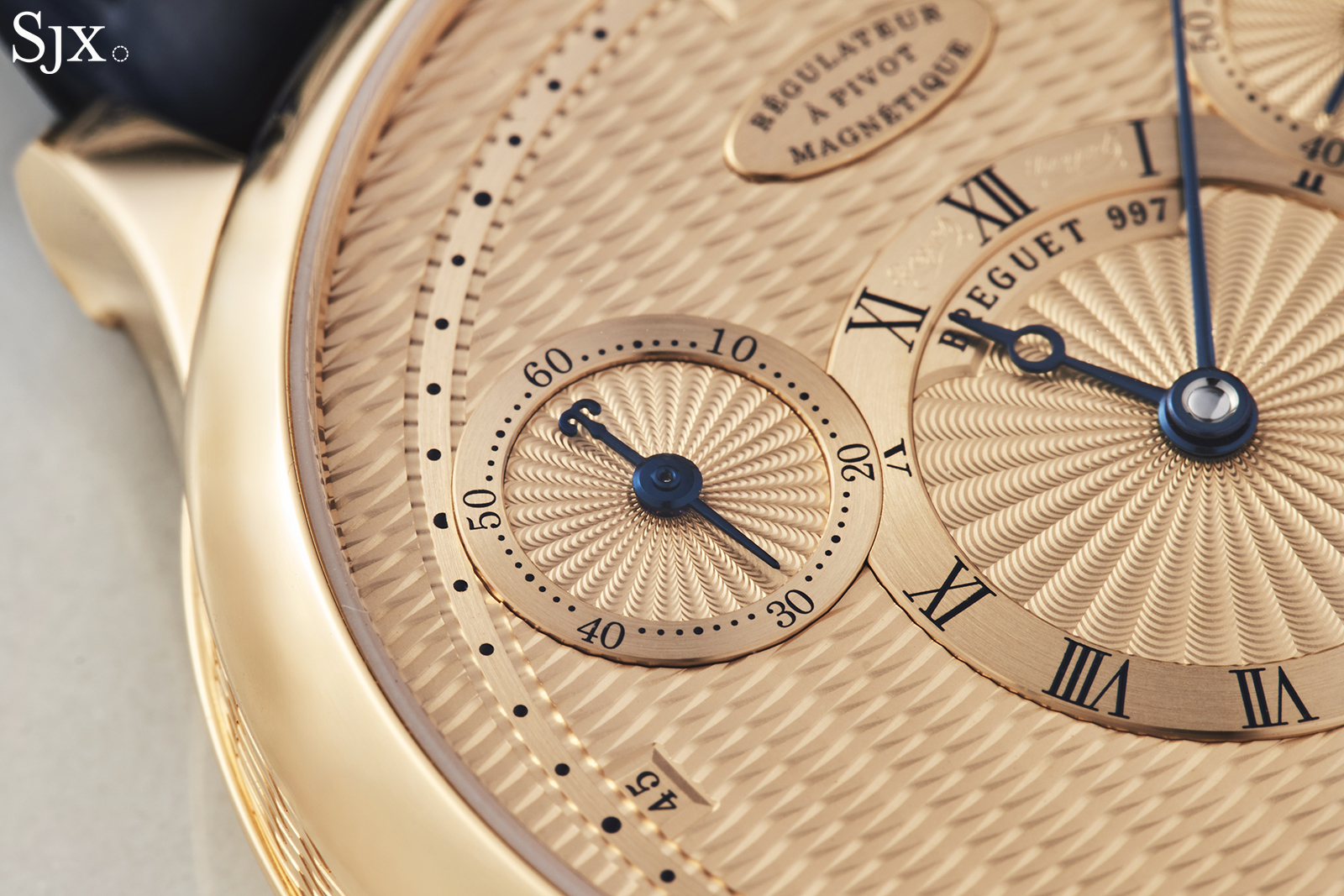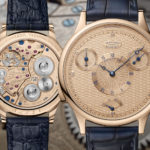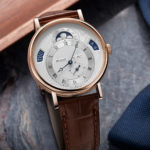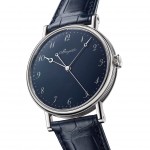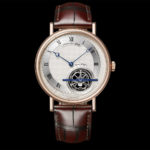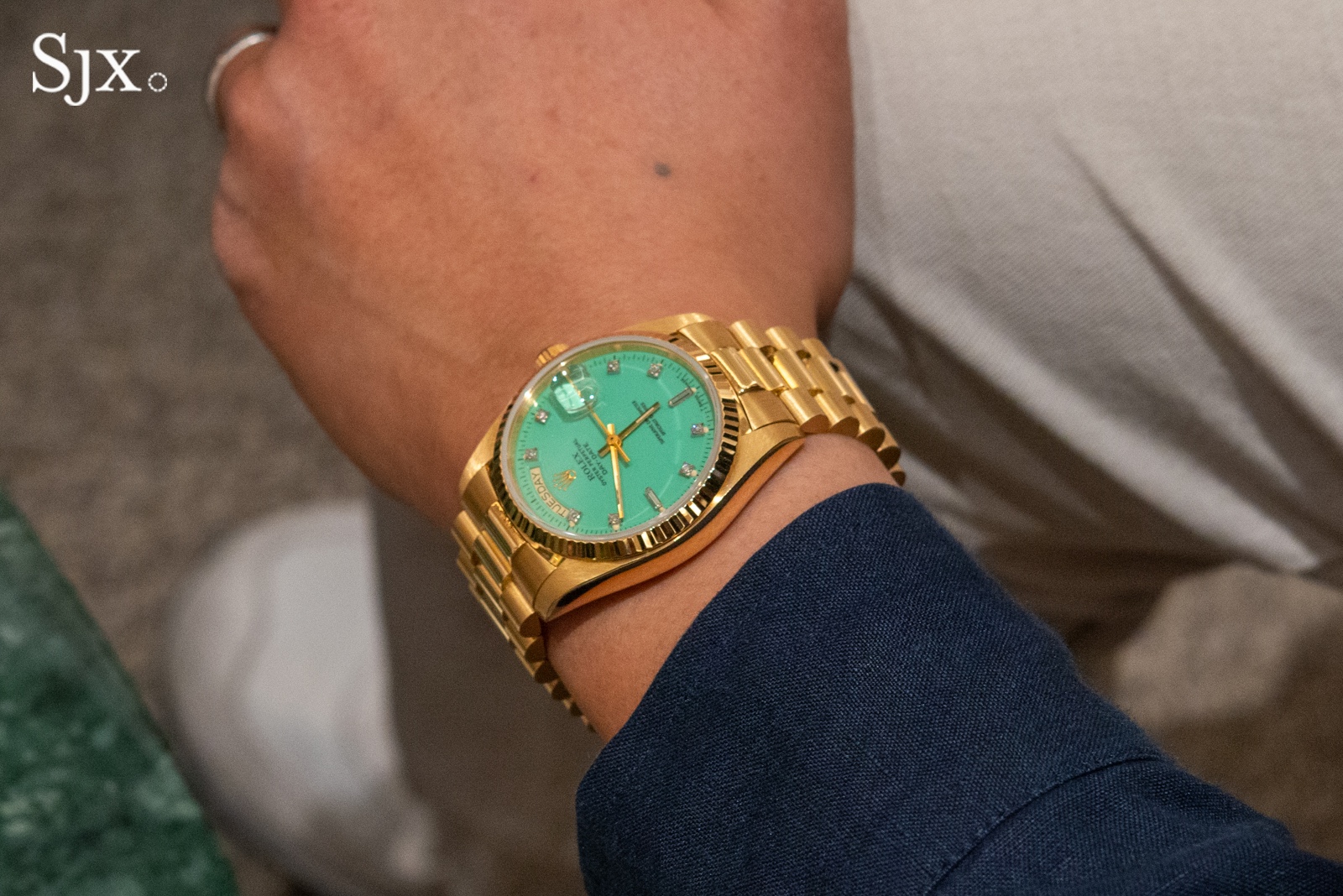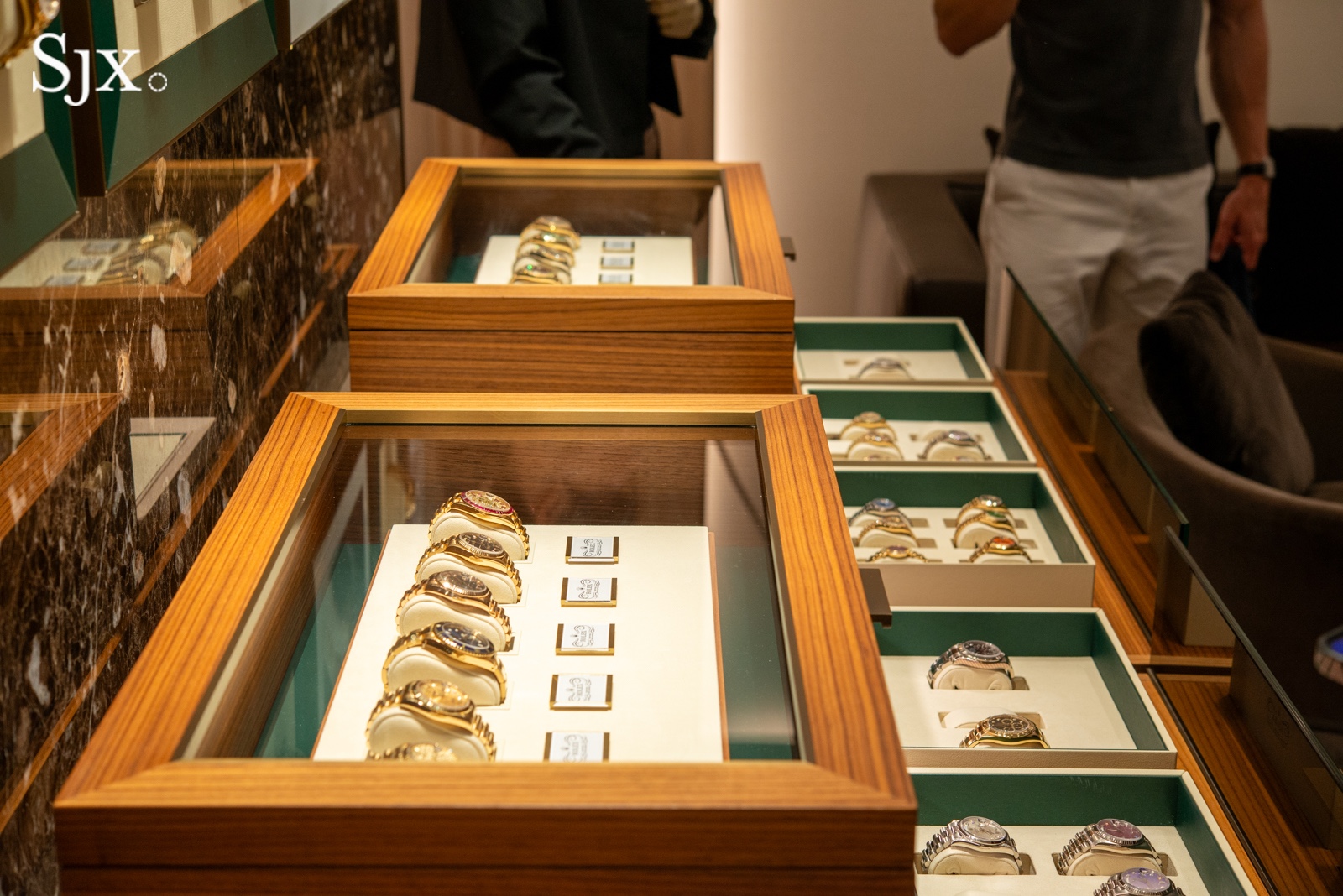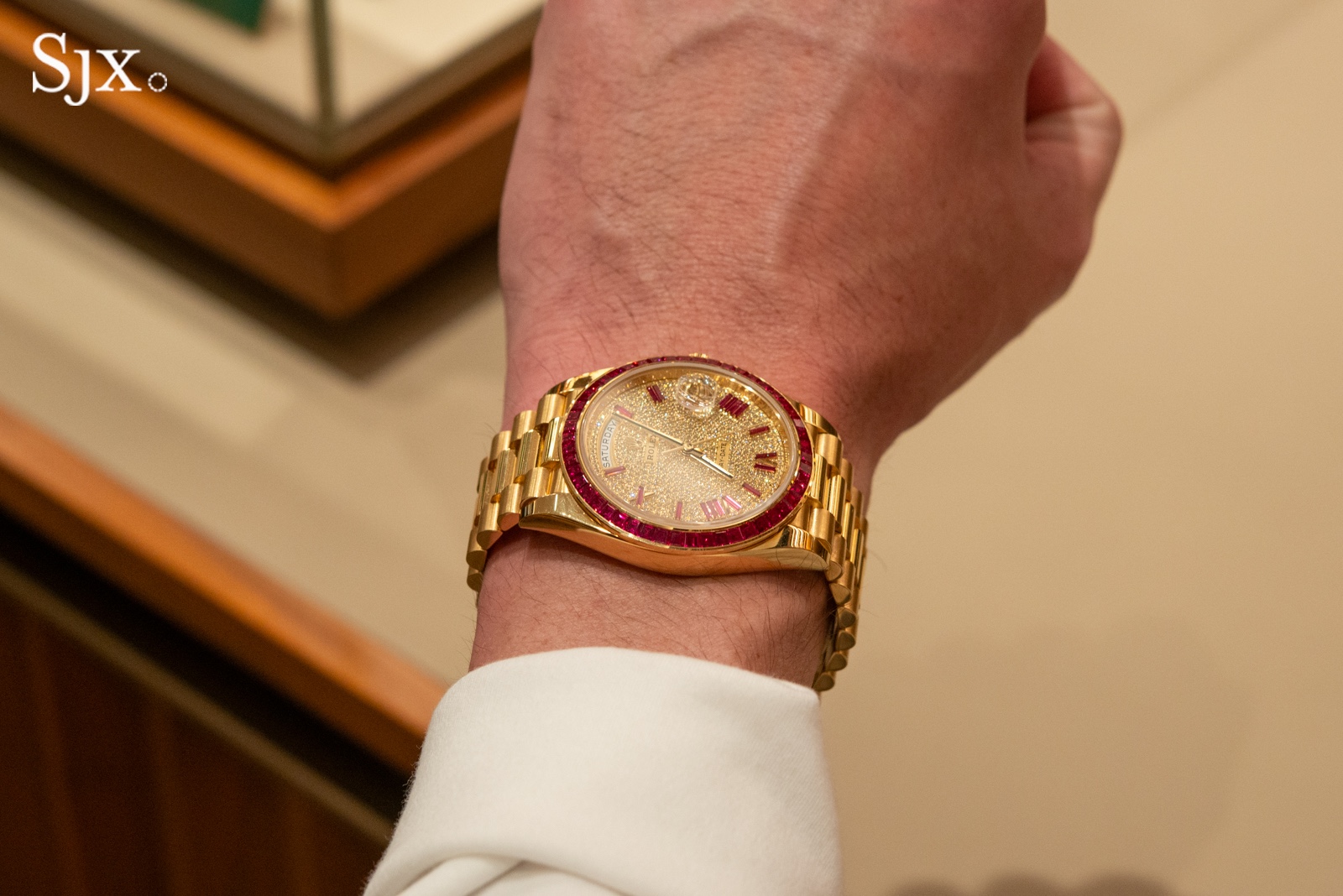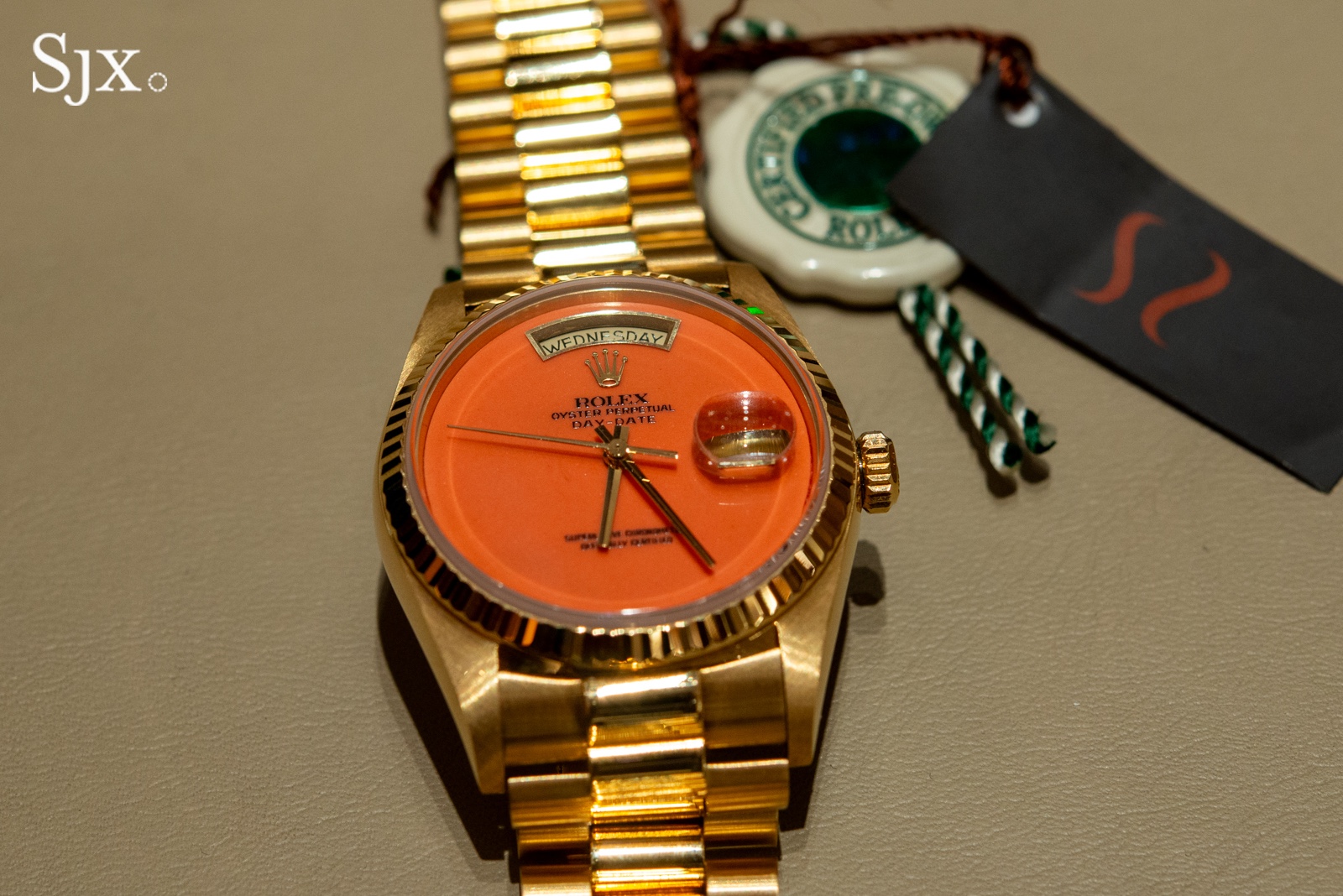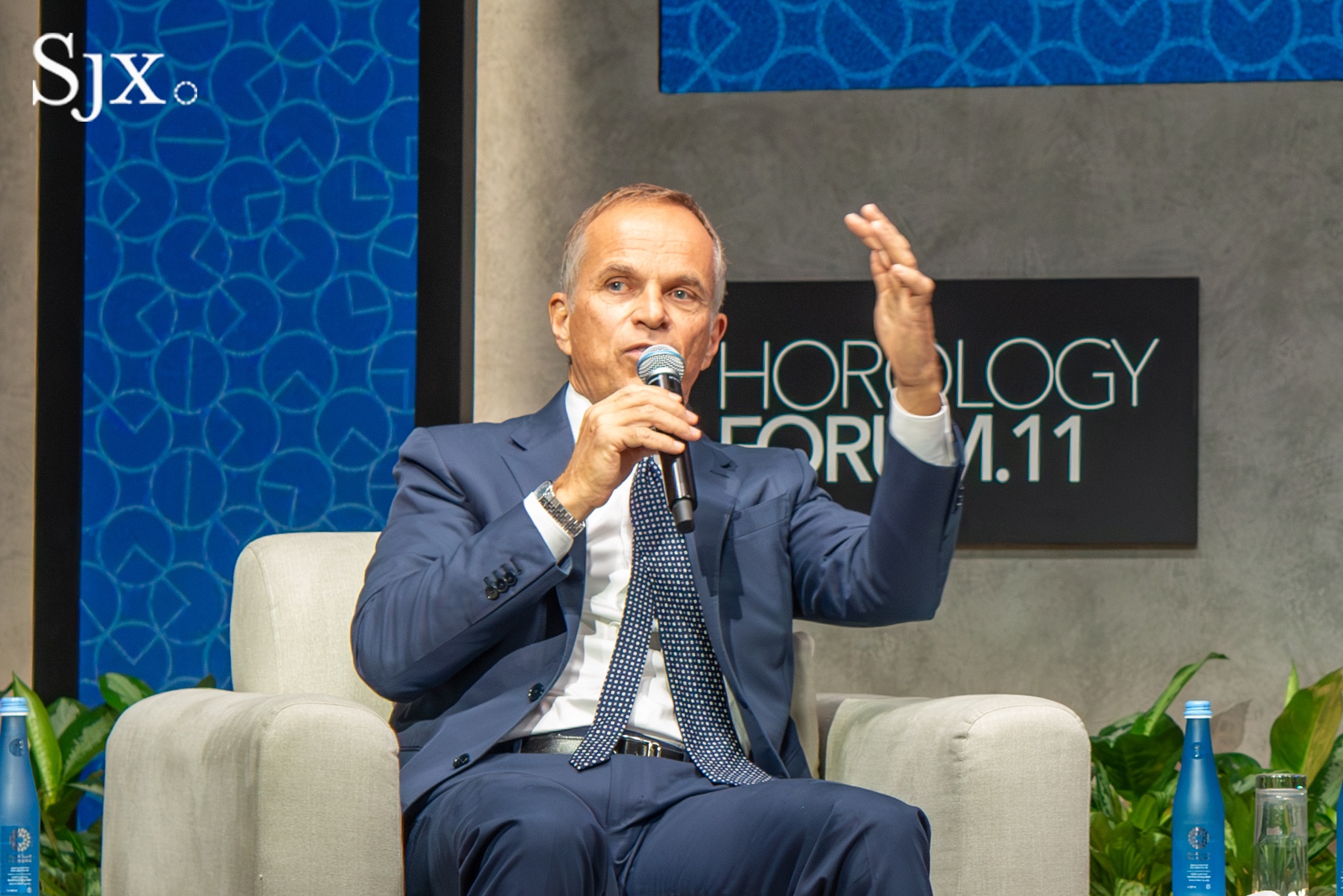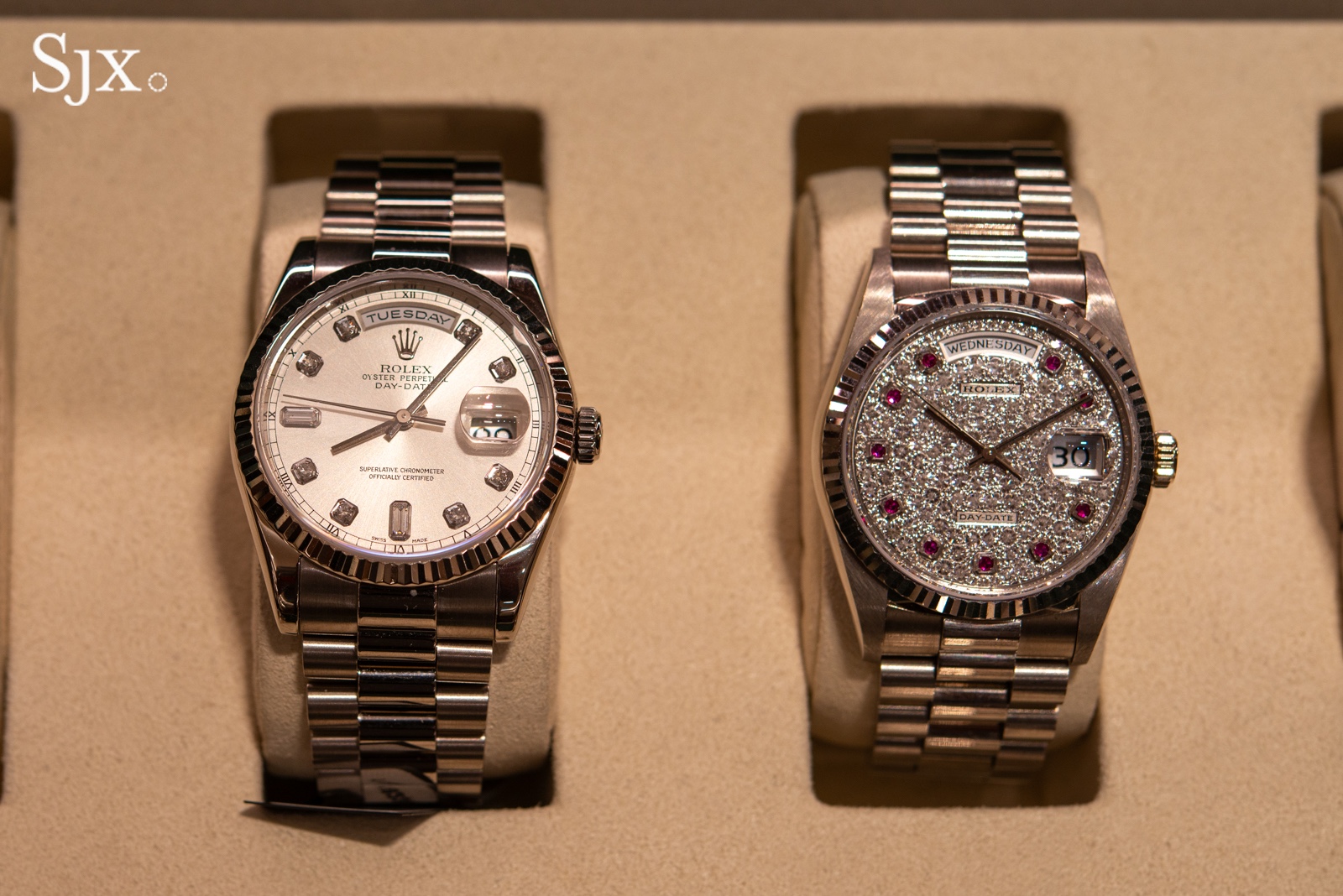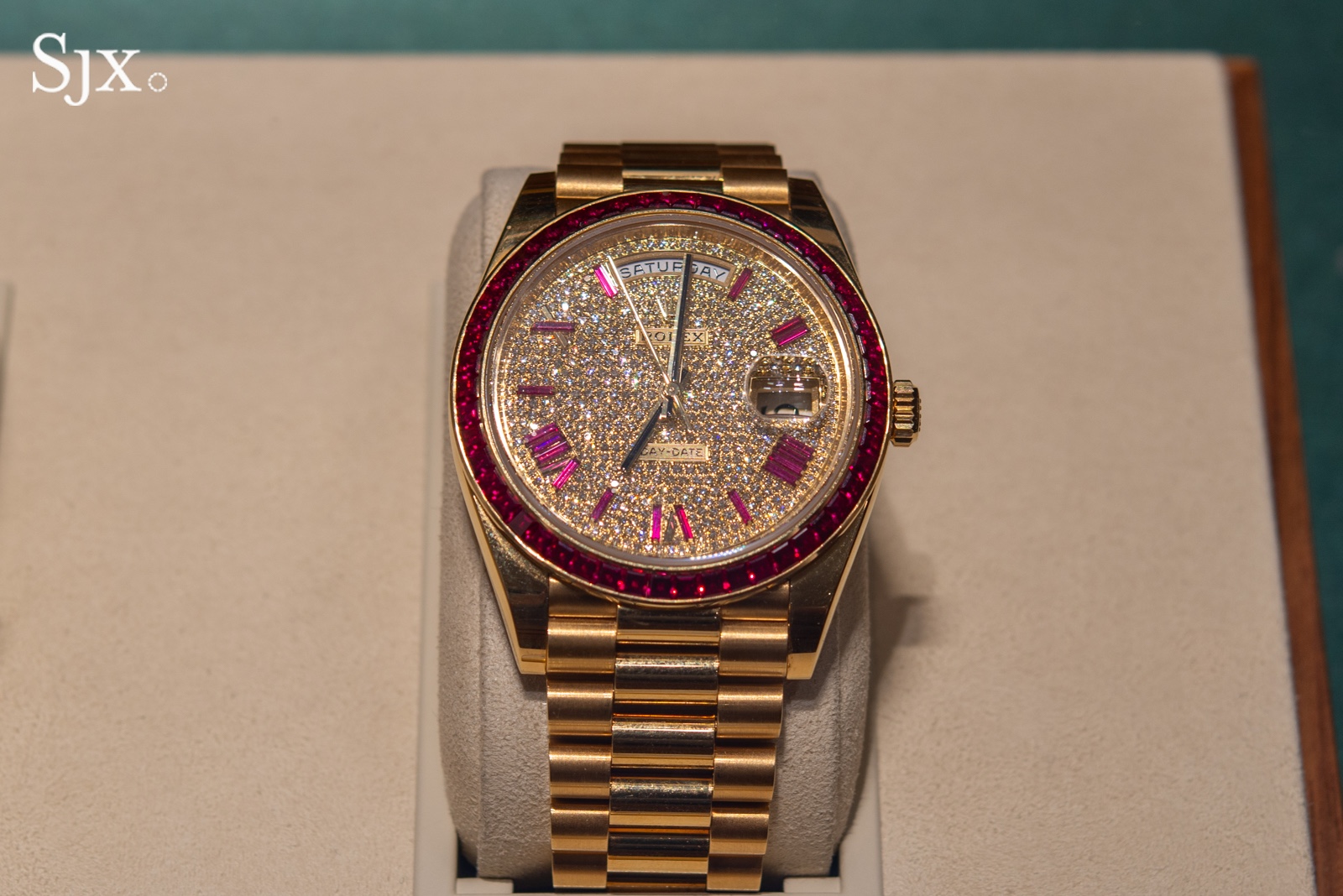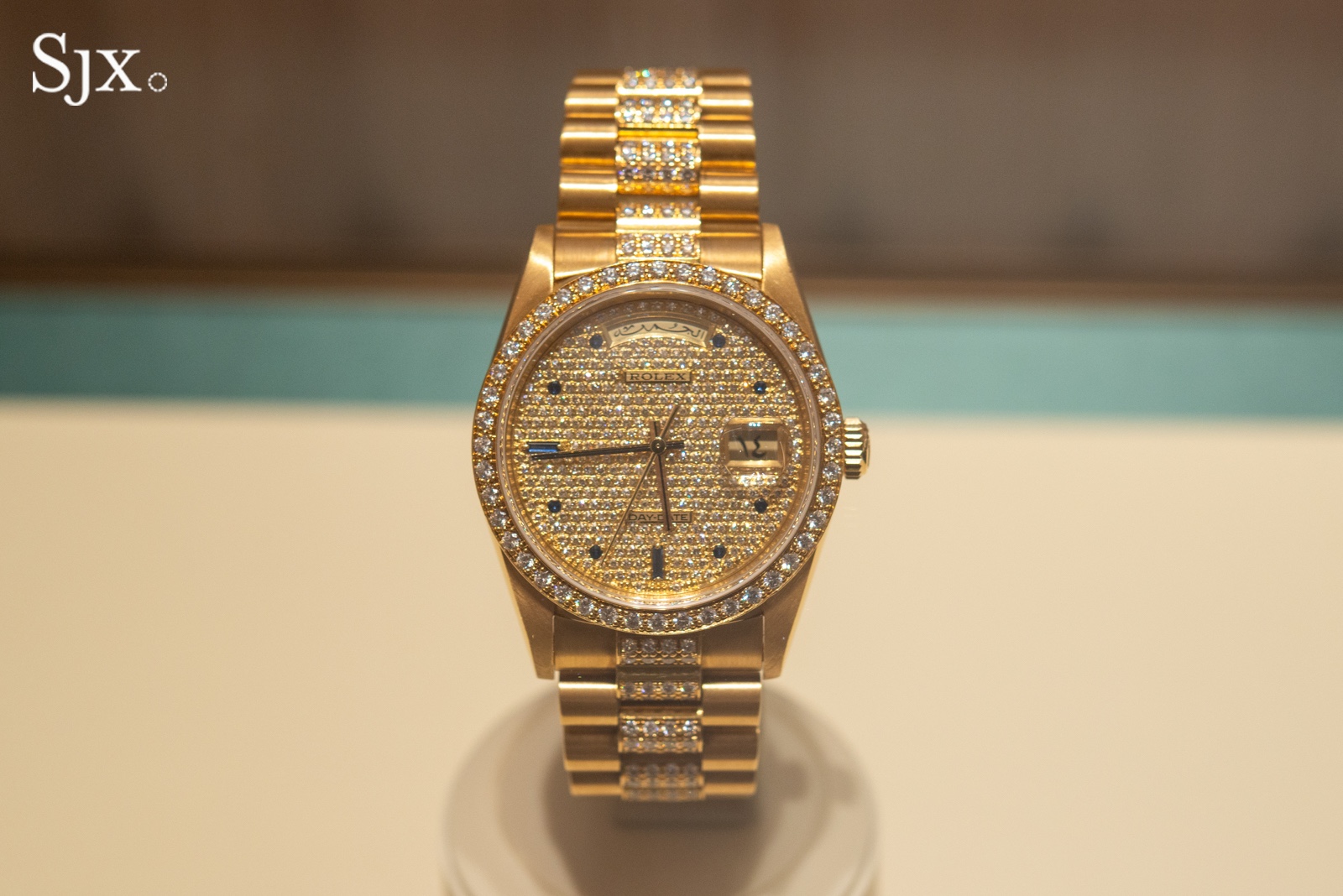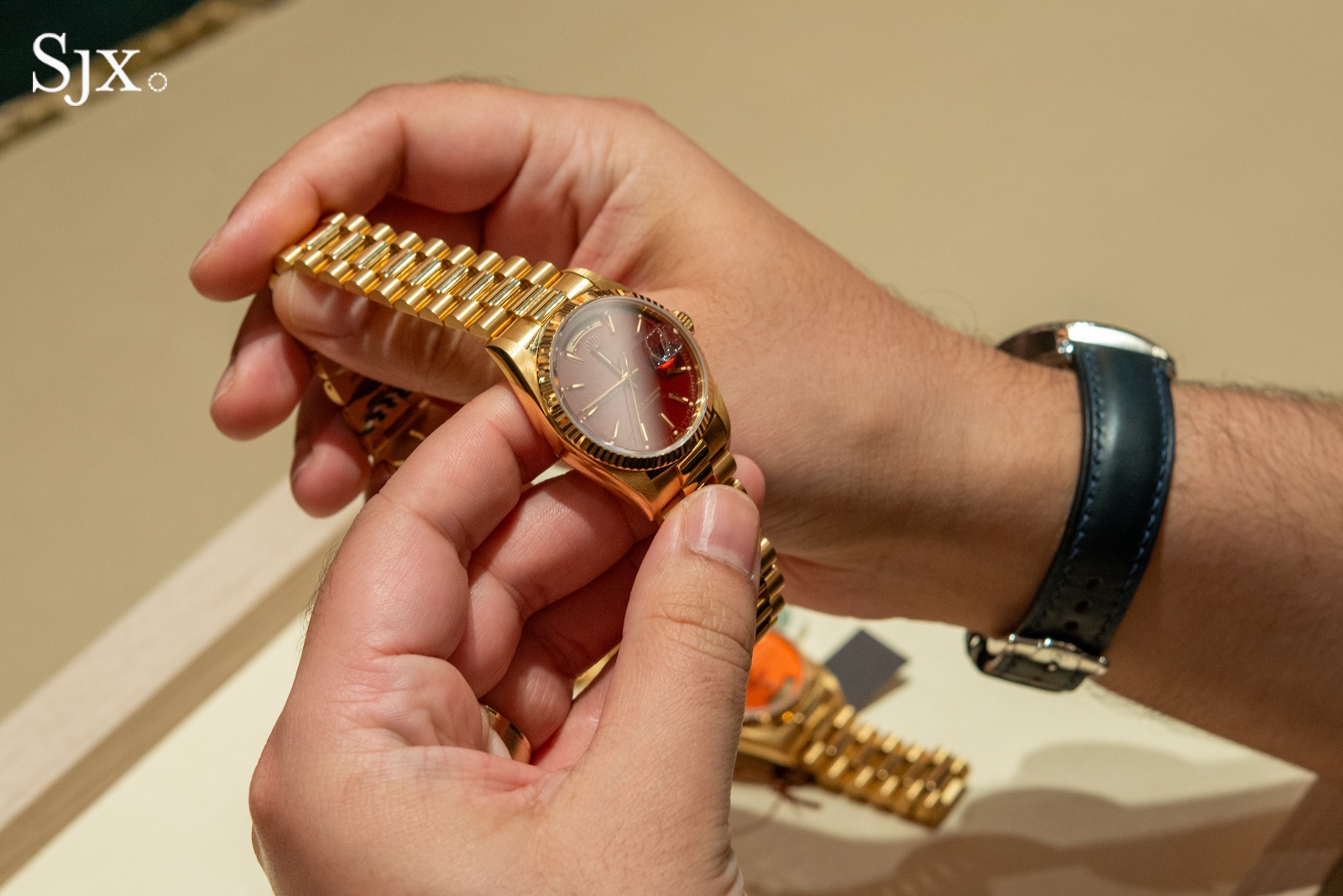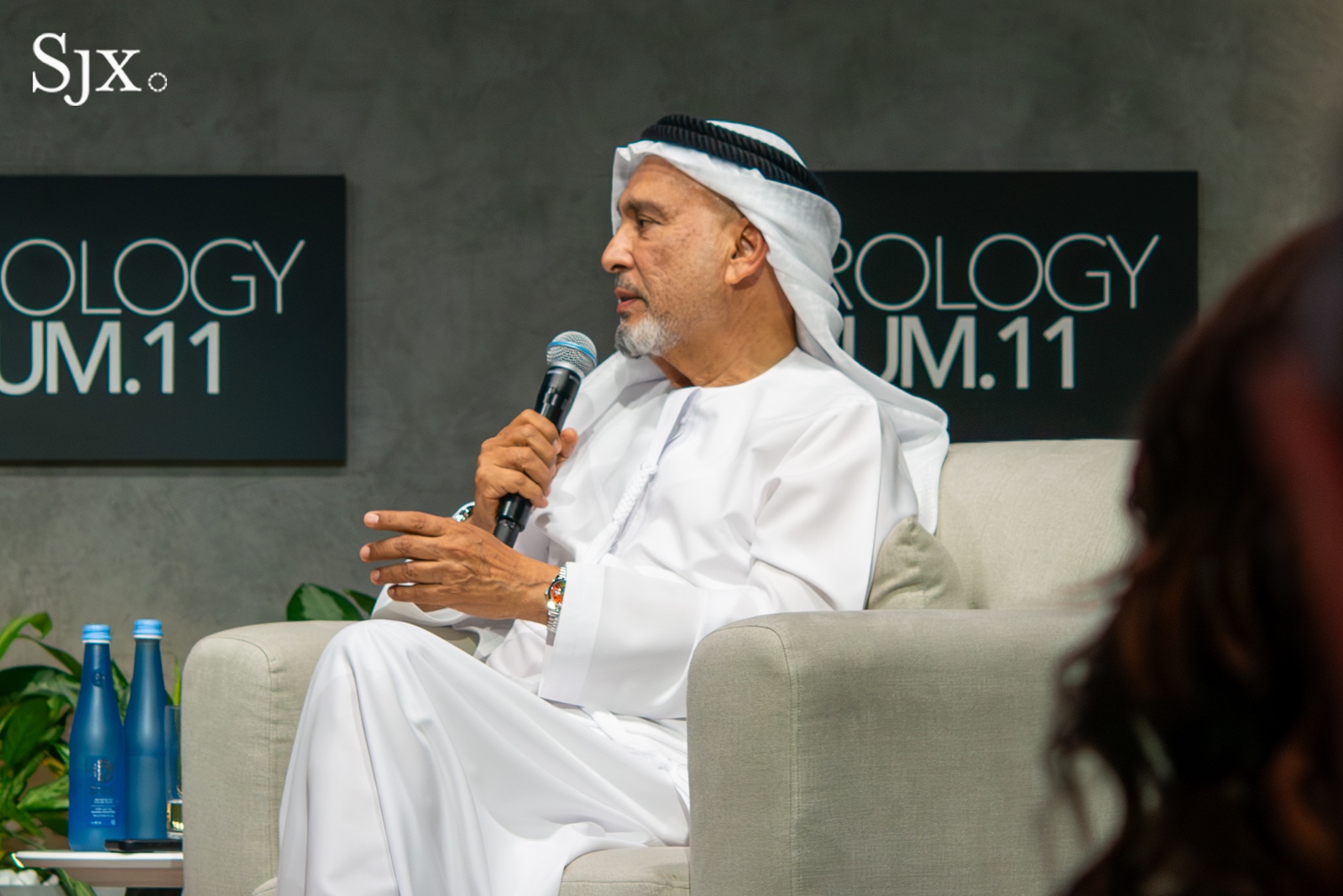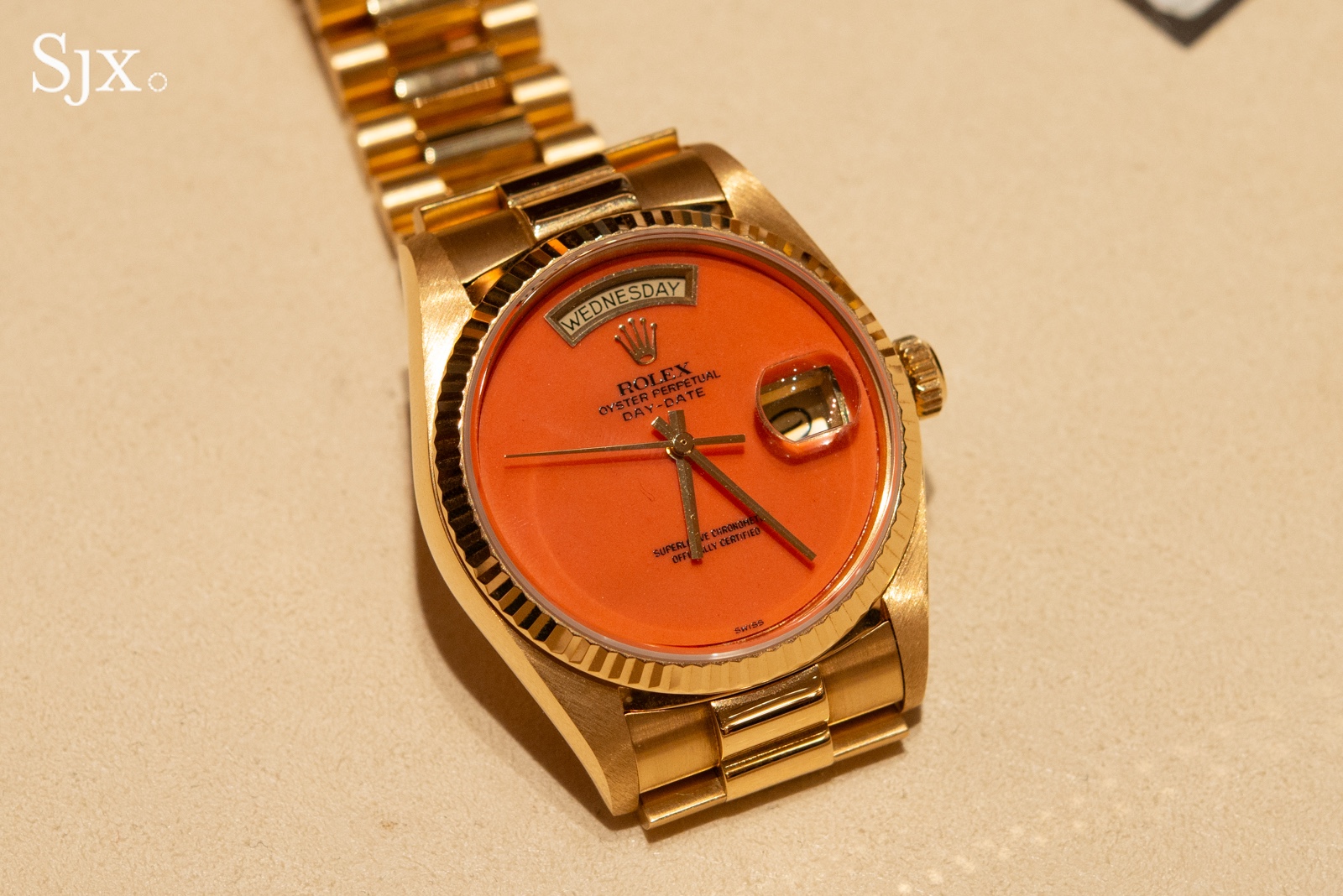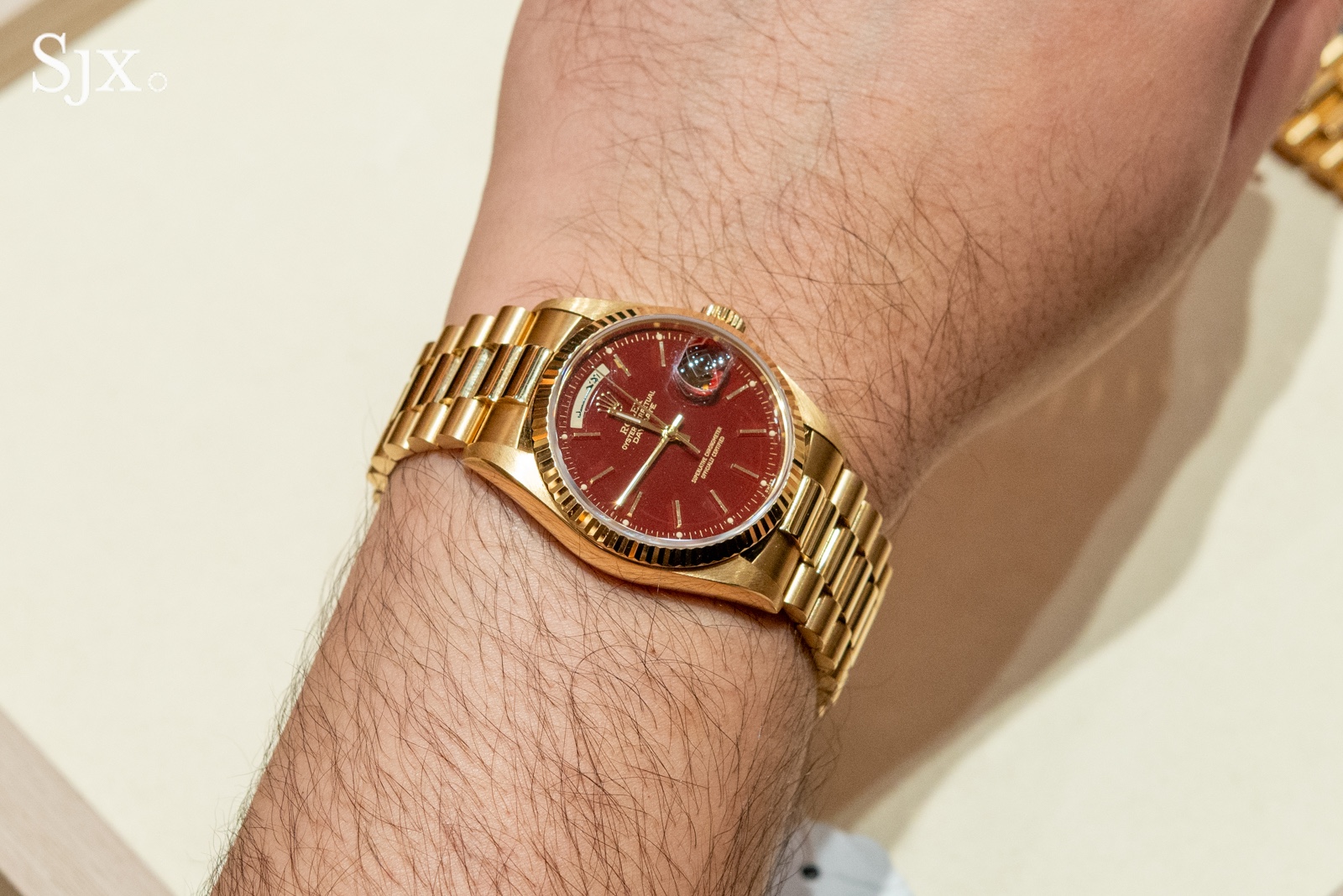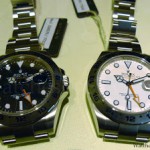Hands On: Breguet Classique 7225
Marvellous and magnetic.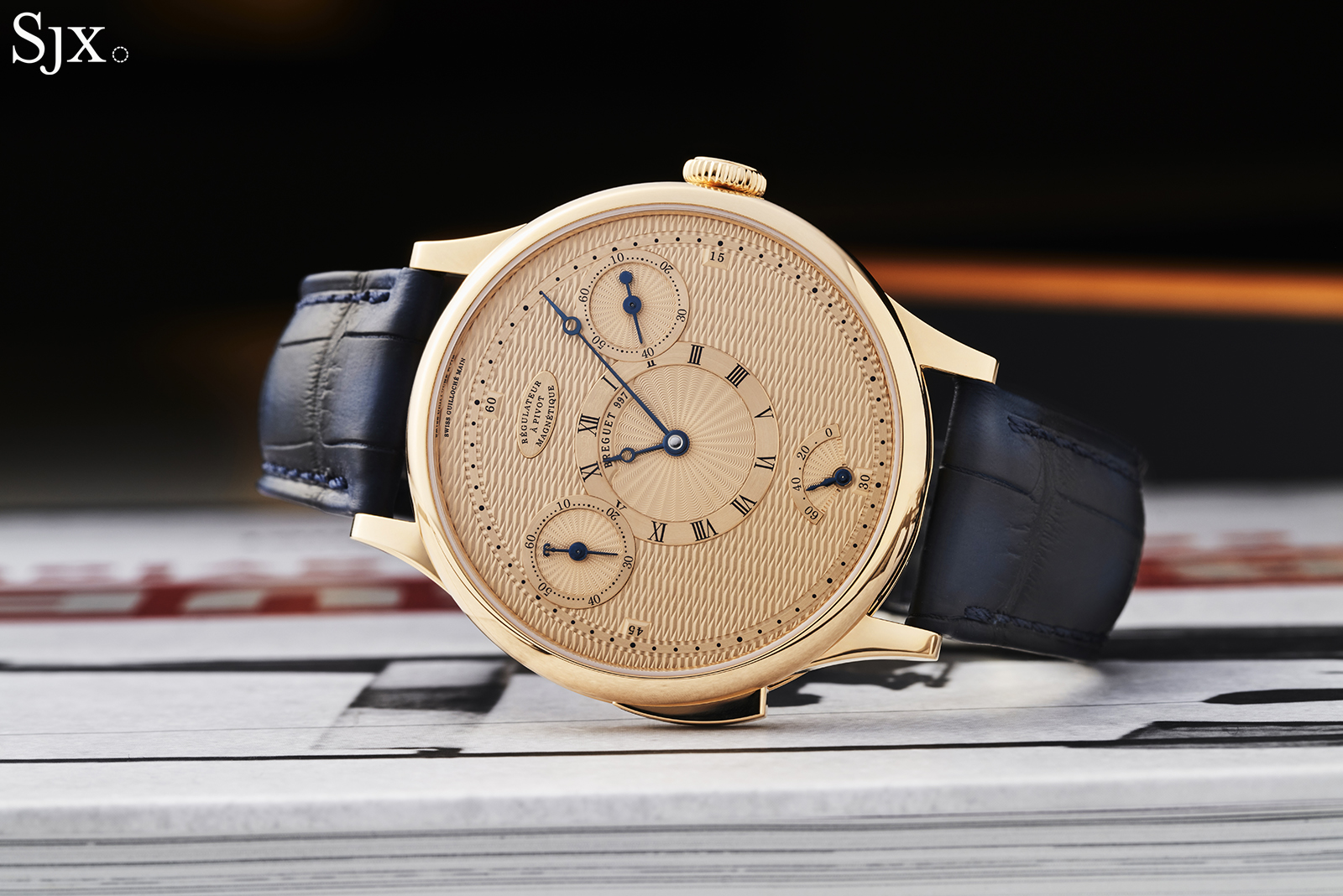
Breguet has enjoyed a great 250th anniversary year – one that promises to end with a big reveal in early December – with several commemorative editions launched for the occasion. The best of the lot, however, is undoubtedly the Classique 7225.
Equipped with one of the most advanced time-only movements on the market, the Classique 7225 combines cutting edge modern watchmaking of the best industrial-haute horlogerie variety with an unexpectedly captivating aesthetic. Some of its details don’t quite make sense, yet the 7225 as a whole makes a lot of sense.
Initial thoughts
The Classique 7225 has a great deal of tactile appeal – it feels good on the wrist. In fact, the 7225 is probably the first Breguet in a long time that is sexy. If there’s one Breguet in today’s catalogue I really want, it’s this one.
At 41 mm, the 7225 might measure large for such a watch, but the proportions are just right. The case is thin enough, while the wide dial maximises the impact of the guilloche on a gold base. If anything, the design might look odd with a smaller format, since the look comes from a pocket watch after all.
Visually, the 7225 is striking and employs the classic Breguet style to great effect. Almost all the elements are familiar so the watch is recognisably “Breguet”, yet it different from the rest of the catalogue. The 7225 instantly looks like a Breguet, which shows its creators have an instinctive understanding of the brand.

With its “floating” magnetic balance staff, the cal. 74SC inside is perhaps the most advanced hand-wind movement on the market (the cal. 7135 of the Rolex Land-Dweller is probably the most advanced overall), even though it’s over a dozen years old now, having been first launched in the Classique Chronometrie 7727. This underlines Breguet’s impressive technical know-how, but also the sparse innovation in terms of industrial-scale chronometry.
Given the movement’s background, the view from the back is unsurprisingly less classical than on the front. The movement layout is essentially unchanged from the first generation, but dressed up with a gilt finish and an engraved bird’s eye view of Vallee de Joux. I find the movement styling too modern for the overall look, and the engraving a little overdone, but the technical merit of the cal. 74SC is strong enough that it gets a pass. In fact, I would take this movement over a “hand” finished, Unitas-derived time-only calibre any day.
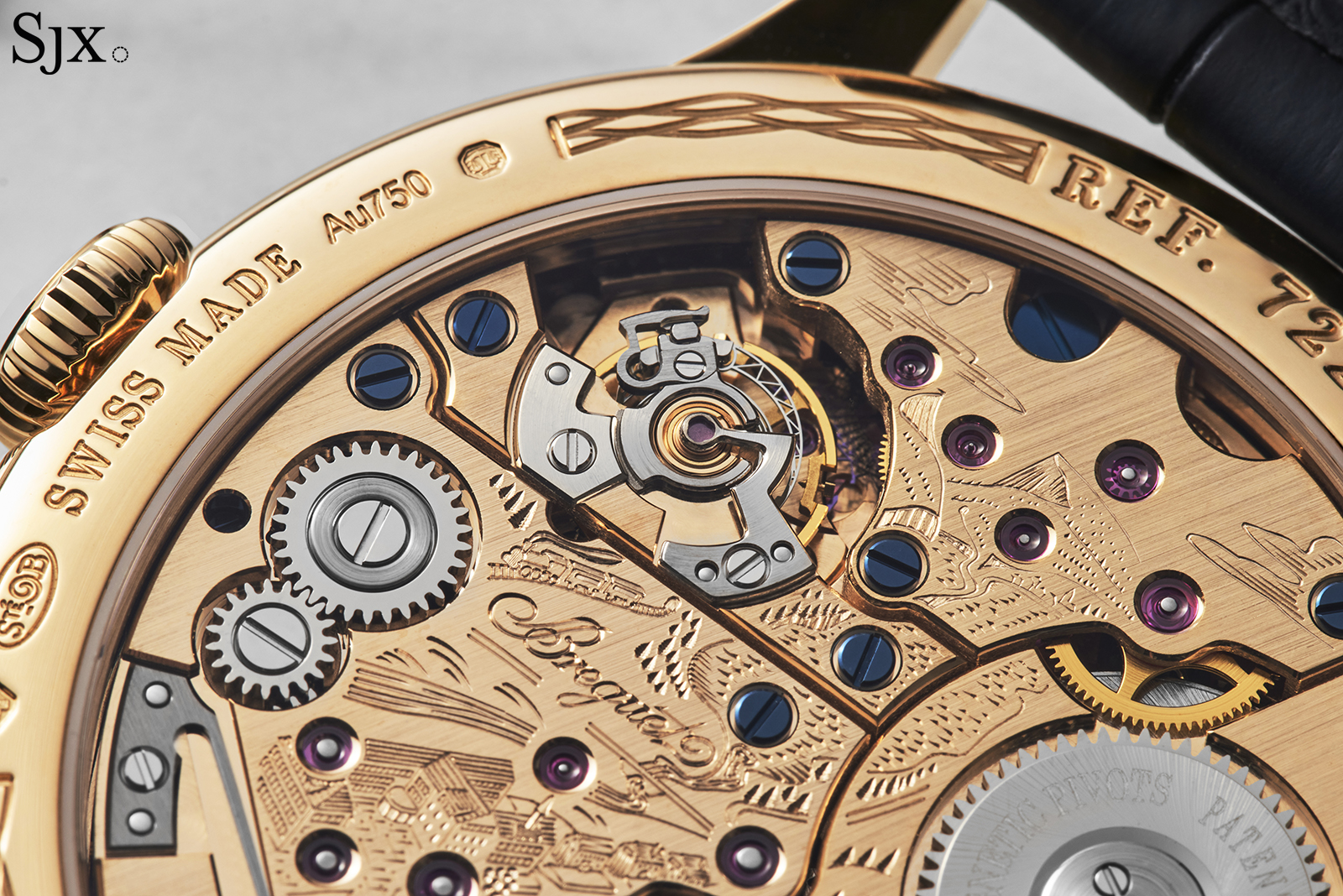
That said, the keen-eyed will notice the 7225 is conceptually illogical in two respects. For one, the basis of the design is a series of important pocket watch tourbillons; the 7225 is not a tourbillon.
And the 7225 has a flyback seconds (sometimes also known as a “Chronostop”) that is activated by a pusher on the side of the case. The pusher, however, resembles a slide for a minute repeater for no discernible reason. But the watch is appealing enough these don’t really matter.
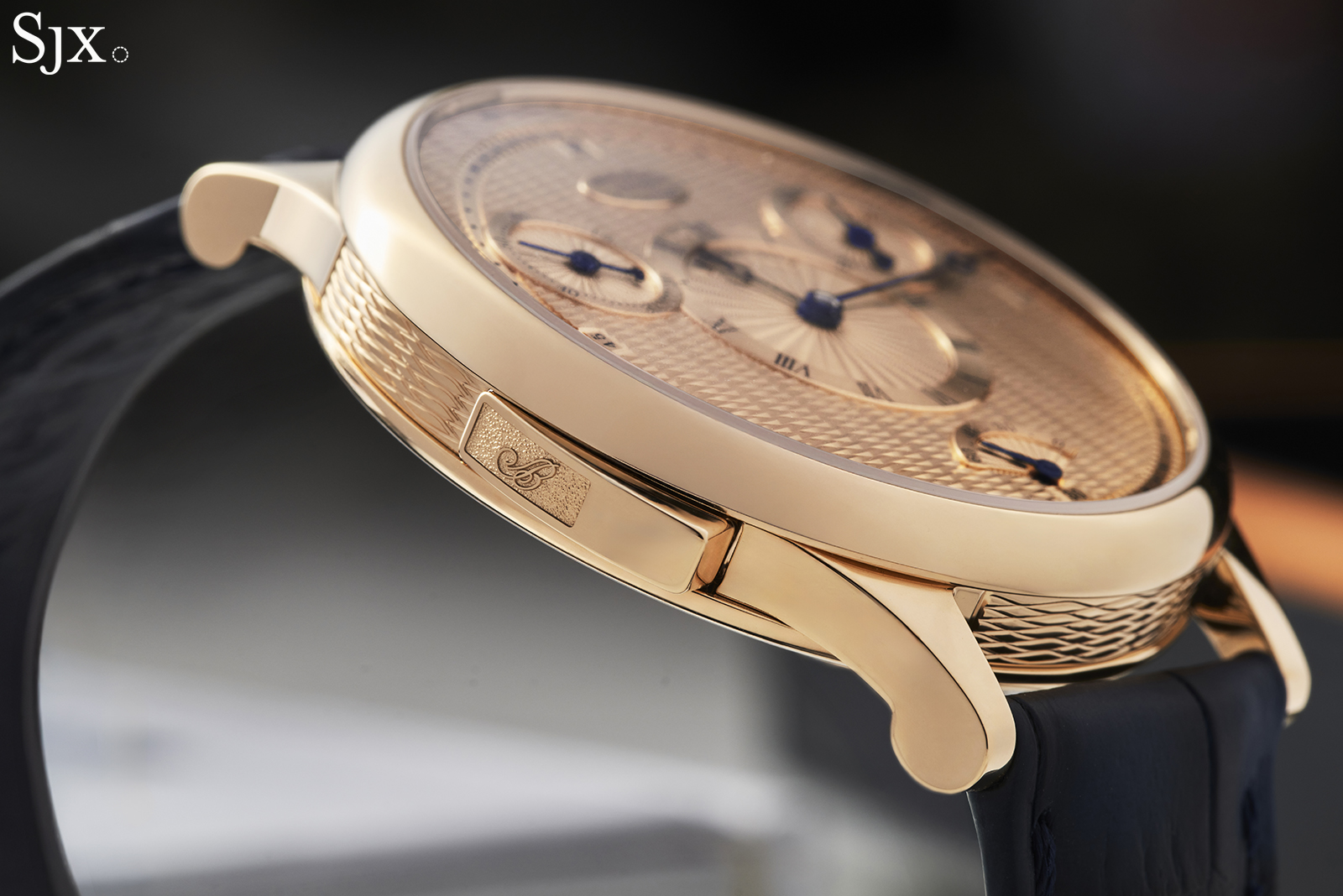
At CHF75,000 the 7225 is priced similar to many time-only watches from emerging independent watchmakers. In comparison, the 7225 offers tremendous value; it should be a little cheaper but the realist in me understands where the market is at today in terms of pricing. Still, the 7225 also stacks up well against watches from establishment brands, since few, if any, offer time-only watch with such advanced, high-end movements.
More broadly, the 7225 underscores Breguet’s uninspired recent history – and the modest actions needed to revitalise the line-up. Like most of the other 250th anniversary watches, the 7225 isn’t actually new since the calibre was launched in 2012, yet a simple makeover results in a magnificent watch. The early launches will no doubt be easy pickings, but the 7225 and its peers now set high expectations.

Four-minute tourbillon not
The distinctive “Hidden Mickey” dial of the 7225 has its roots in a series of exceptional and significant pocket watches made by Abraham-Louis Breguet in the early 19th century. All shared a four-minute tourbillon and natural escapement, while a handful had gilt guilloche dials that inspired the 7225. Notably, pocket watch no. 1890 featuring a gilt dial sold a few months ago at Sotheby’s in Geneva for CHF1.88 million to none other than François-Paul Journe, reflecting its importance.
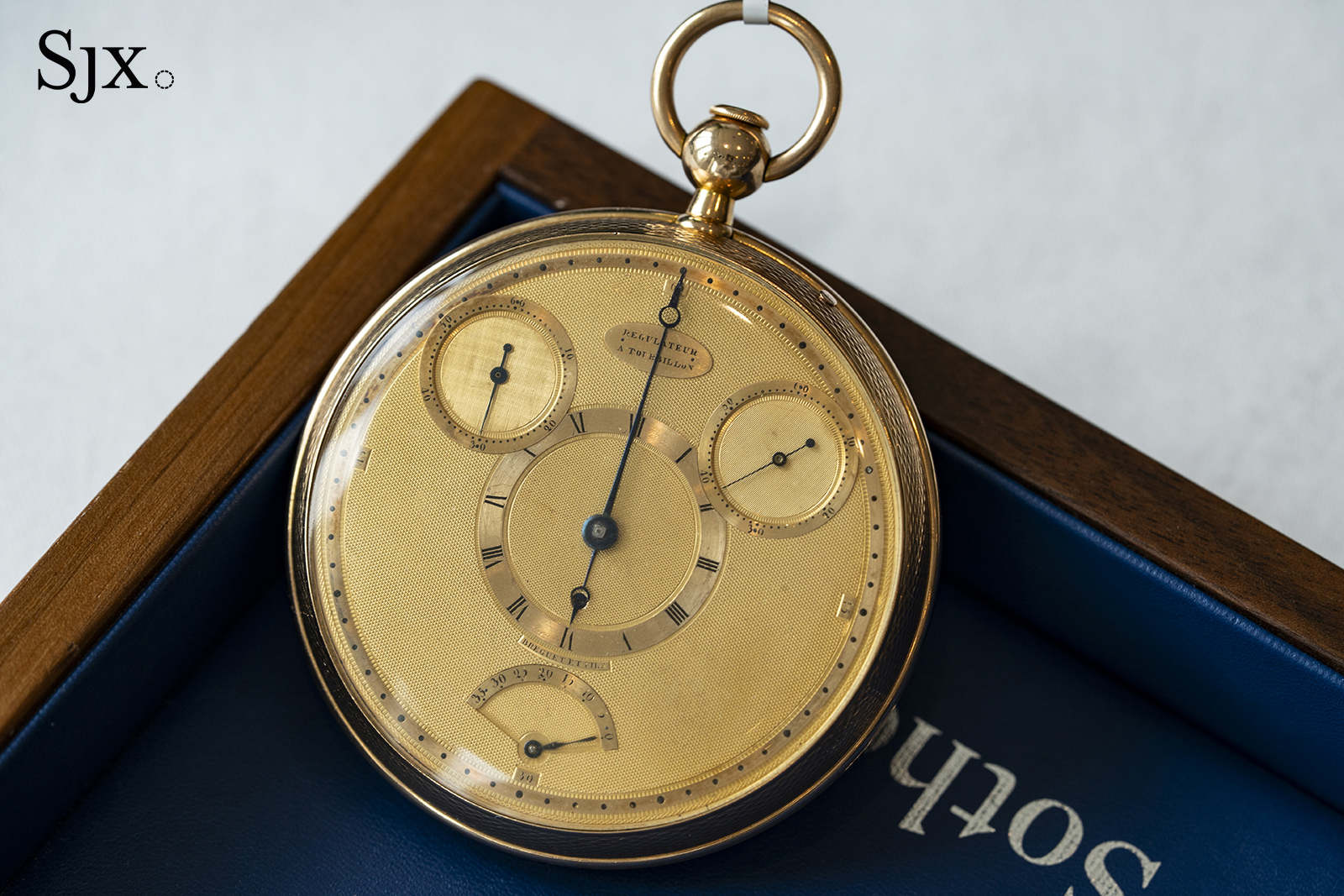
Reviving the unusual dial layout makes sense given the history of the originals, though the 7225 isn’t quite linked to the originals in terms of function or technique. The argument could be made that the original pocket watches were the ultimate chronometers of their day, as the 7225 is today.
The 7225 faithful adopts the design of the pocket watches, right down to the twin seconds counters and power reserve at six. The additional seconds was an add-on that required minor work to the movement, but necessary to reproduce the pocket watch dial layout.

The seconds at two is a conventional seconds, while the other at ten o’clock is the “observation” seconds, otherwise known as a flyback seconds that can be instantaneously reset and restarted with the pusher at eight o’clock. I would consider this a gimmick if the 7225 was not such an impressive watch; the flyback seconds is not a major or practical complication, but adds a tiny bit of interactivity to the watch.

The main portion of the dial is decorated with wavy Quai de l’Horloge guilloche that was designed for Breguet’s anniversary
Made of several parts, the dial is impressively executed. The guilloche is sharp and refined, and according to Breguet, done on hand-operated rose and straight-line engines, as is tradition. All of the dial parts are solid 18k Breguet gold, a yellow gold alloy that’s proprietary to Breguet.
The high quality of execution also extends to the hands. The blued steel hour and minute hands show off mirror polished counter sinks on the central bosses.
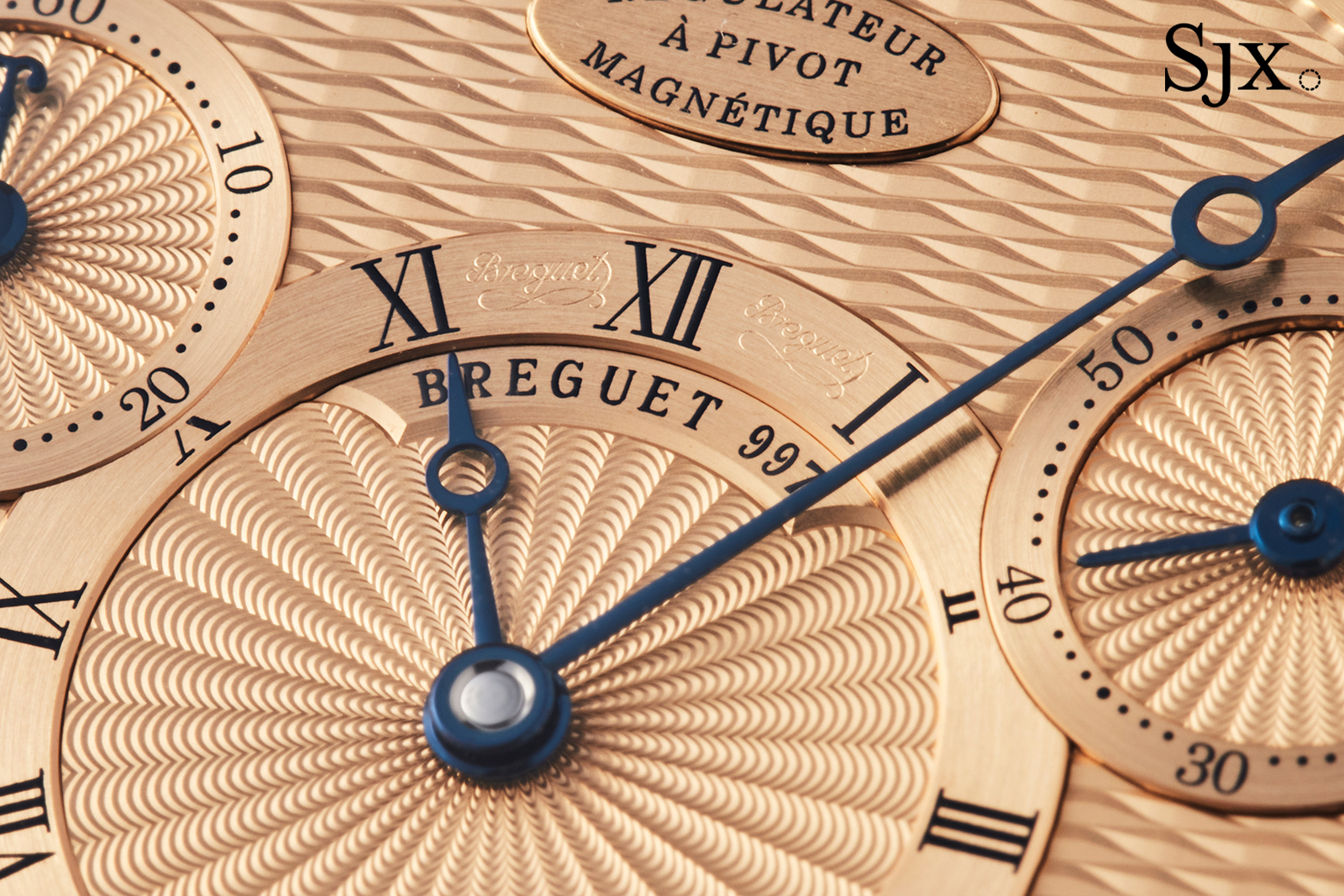
The “secret” signature on either side of “XII”
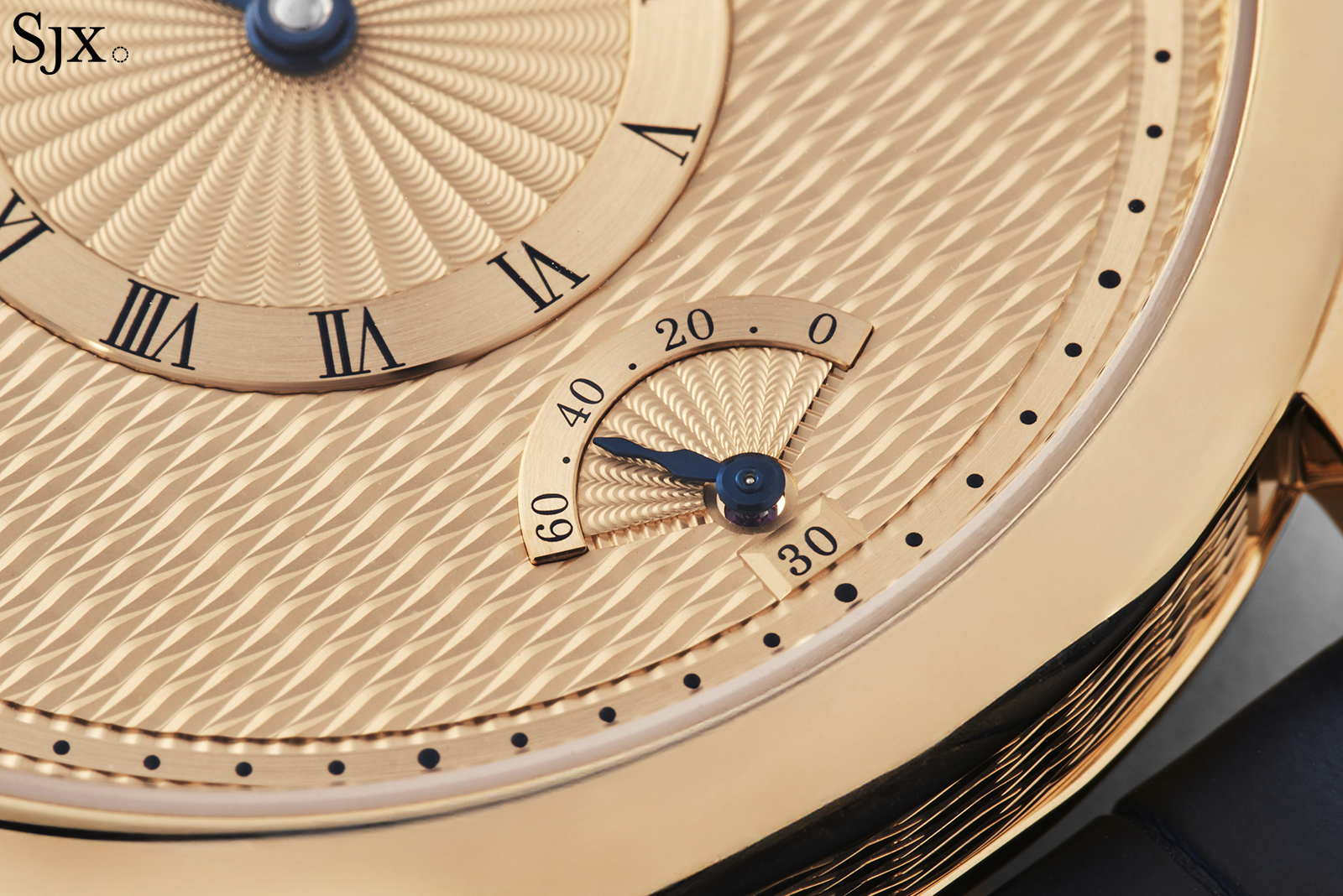
The guilloche continues onto the case band as well. Like the main section of the dial, the case sides are decorated with Quai de l’Horloge engine turning, a wavy motif conceived for the anniversary and found across the commemorative editions.
Unlike the dial that is clearly 19th century, the case is definitely 20th century and similar to that of the Classique Souscription. It has a mid-20th century style found on Breguet wristwatches made during that time, so it does have historical basis. This even extends to the flat crown, reflecting the keen eye for detail in the design. Despite being so far apart in historical terms, the elements complement each other perfectly.
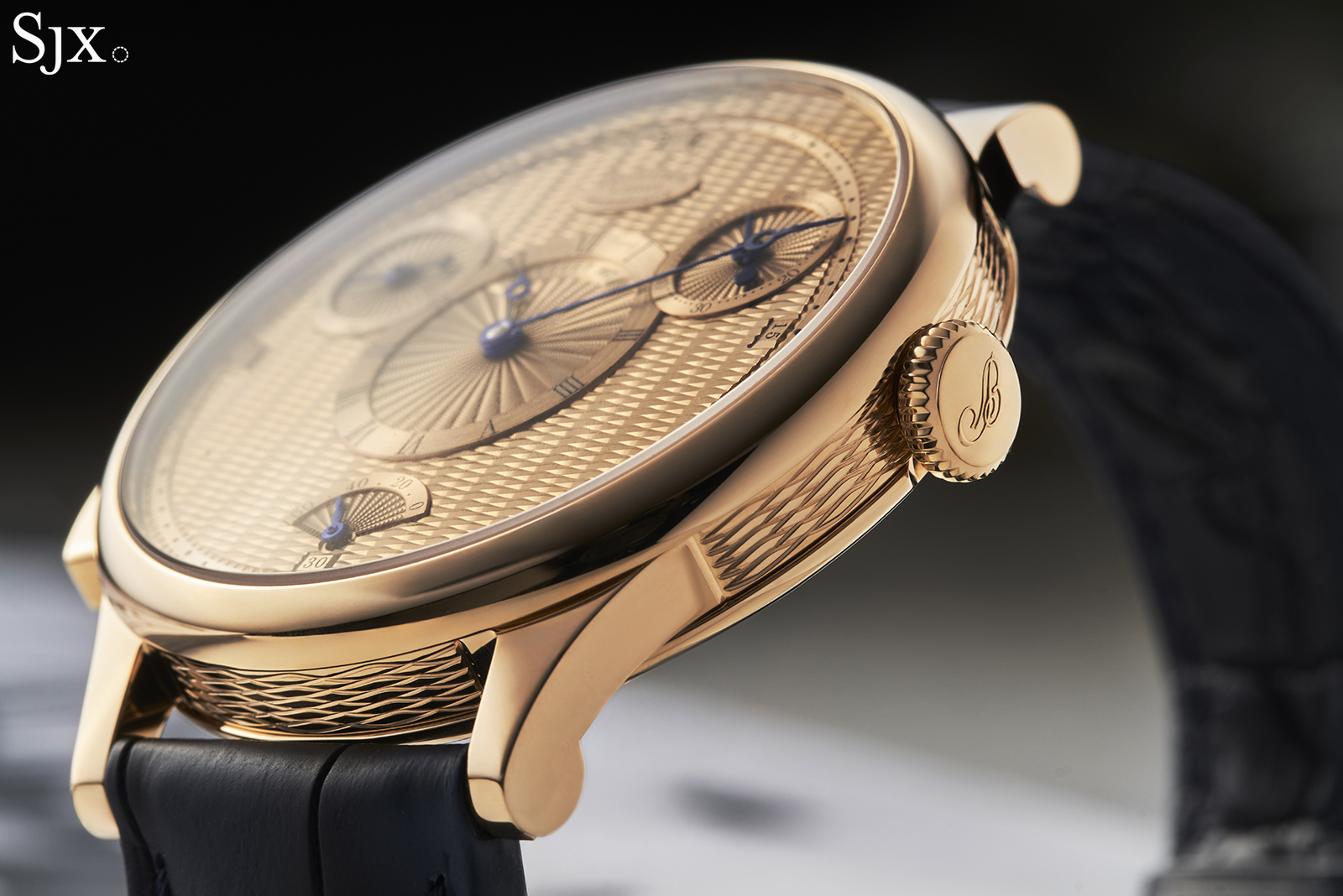
The cal. 74SC inside is derived from the cal. 574 DR Classique Chronometrie 7727. Both movements are fundamentally identical, but the cal. 74SC has been reworked to accommodate the new dial layout, while also undergoing a cosmetic makeover.
The reworking of the movement is minor and probably added a little to the height. However, the defining innovation of the movement remains unchanged: magnetic pivots for the balance staff.

To quote my 2012 story on the movement, “tiny magnets on each endstone of the balance staff keep it in place, pulling [the balance] back upright when the balance is displaced by shocks. Where large balance wheels, overcoils and free sprung balance wheels were the norm in historic attempts to improve chronometry, the Classique Chronometrie is a distinctly modern approach.”
“And because the magnets keep the balance staff suspended in an identical position regardless of the position of the watch, so the friction on the pivots is constant all the time. In a regular wristwatch the vertical position tends to cause the most friction due to the weight of the balance wheel pulling downwards.”

In addition, the escapement and hairspring are in silicon. Coupling with the magnetic pivots, this allows the cal. 74SC to run at 10 Hz, or 72,000 beats per hour – double the conventional standard of 3 Hz for a high-frequency movement.
This extremely high frequency boosts chronometry by improving the stability of timekeeping and reducing errors caused by external forces like magnetism and shock. I am certain the cal. 74SC is one of the most precise hand-wind movements on the market today.
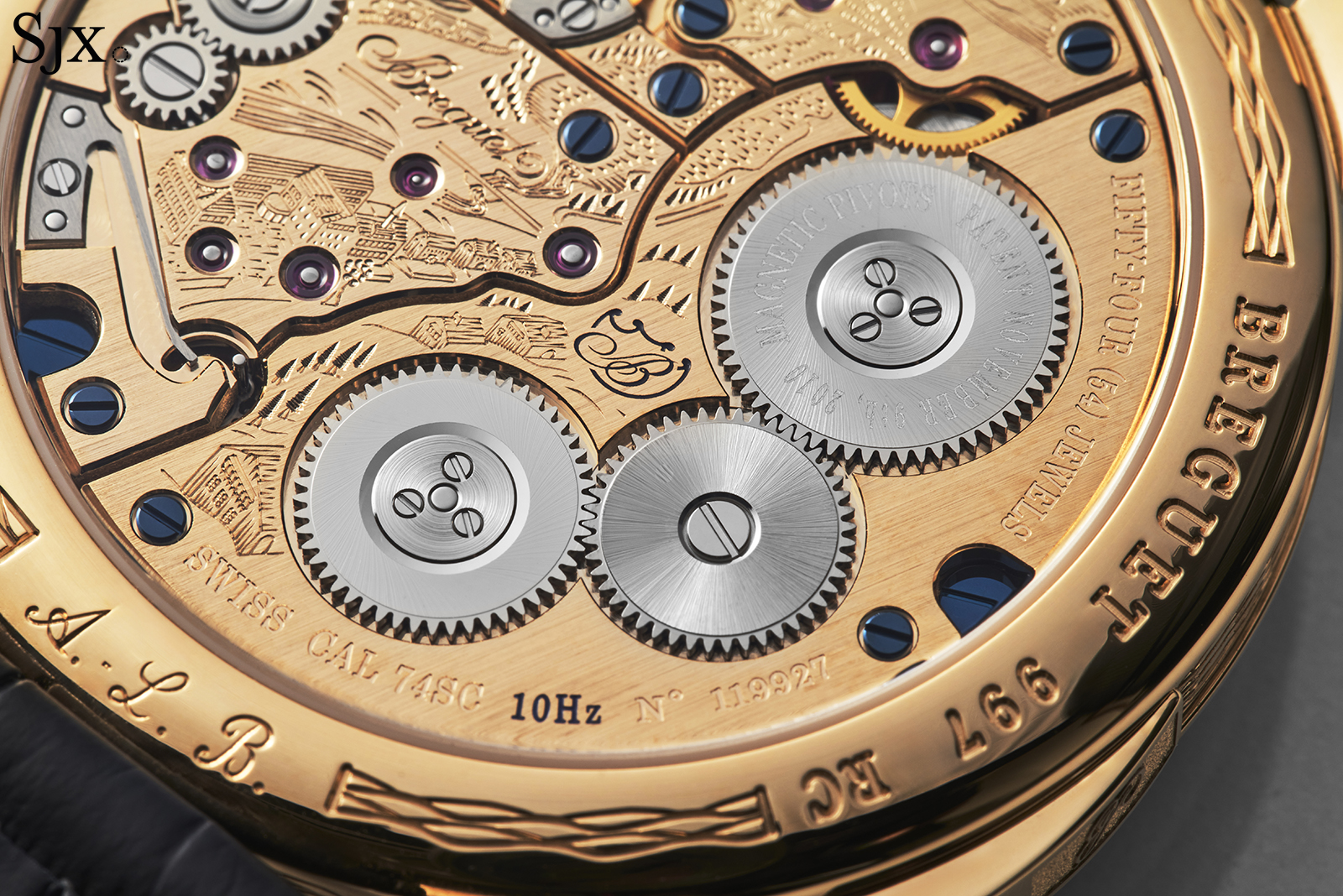
The stylised “B” emblem on the barrel bridge is the new “Breguet hallmark” that the brands says covers “component quality, performance and ethics”
The overall architecture of the movement remains unchanged, though it has been dressed up substantially compared to the cal. 574 DR. The bridges have been plated in Breguet gold and then hand engraved with a view of Le Chenit, the town where Breguet is now headquartered. As with the engraved movement on the new Type XX, this feels a little overdone in terms of visuals but I can’t fault the quality of the work.
Notably, the finishing on the movement appears improved over the cal. 574 DR of 2012. Many parts appear to enjoy some hand finishing, which is perhaps not surprising since that’s also the case for other current Breguet movements.
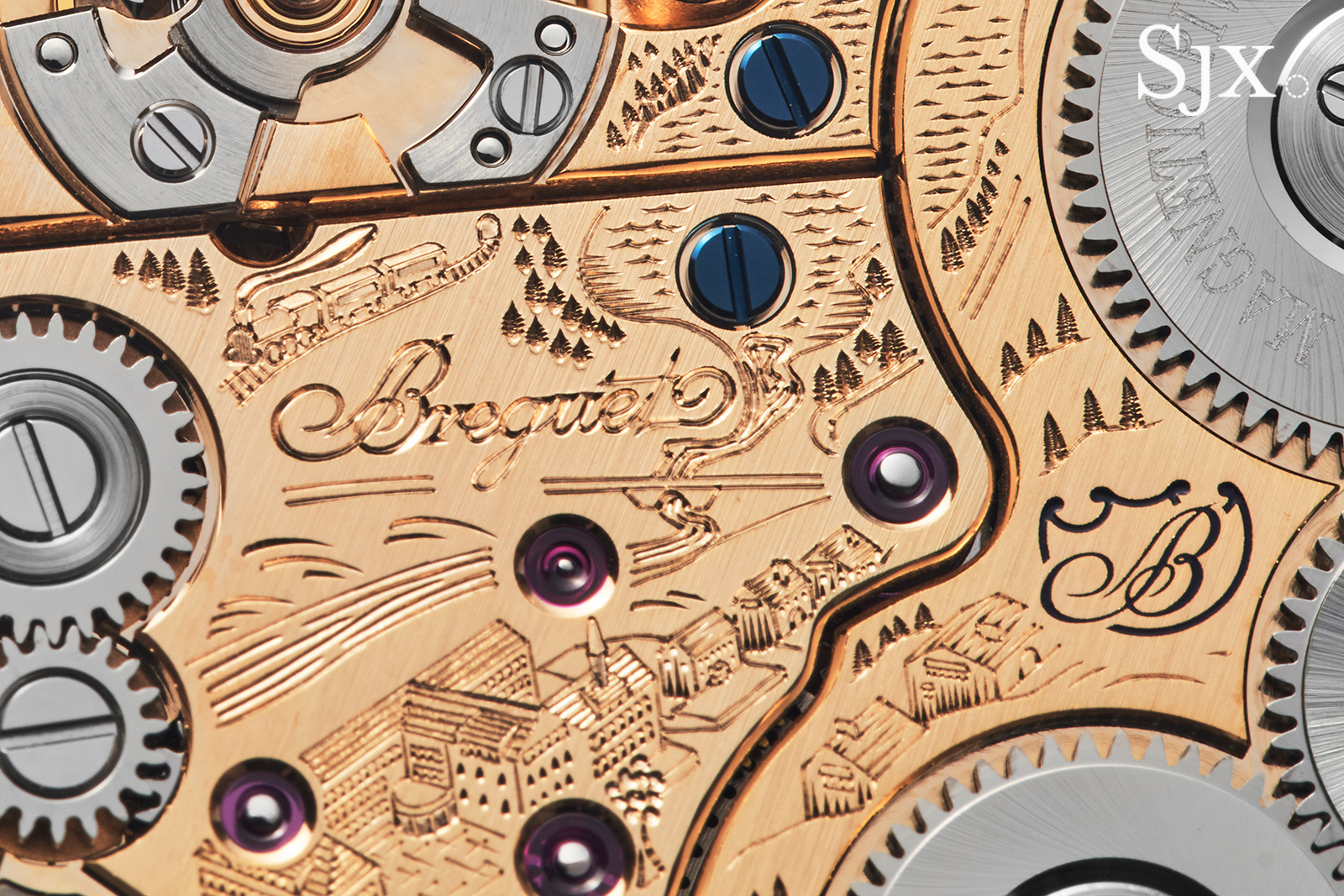
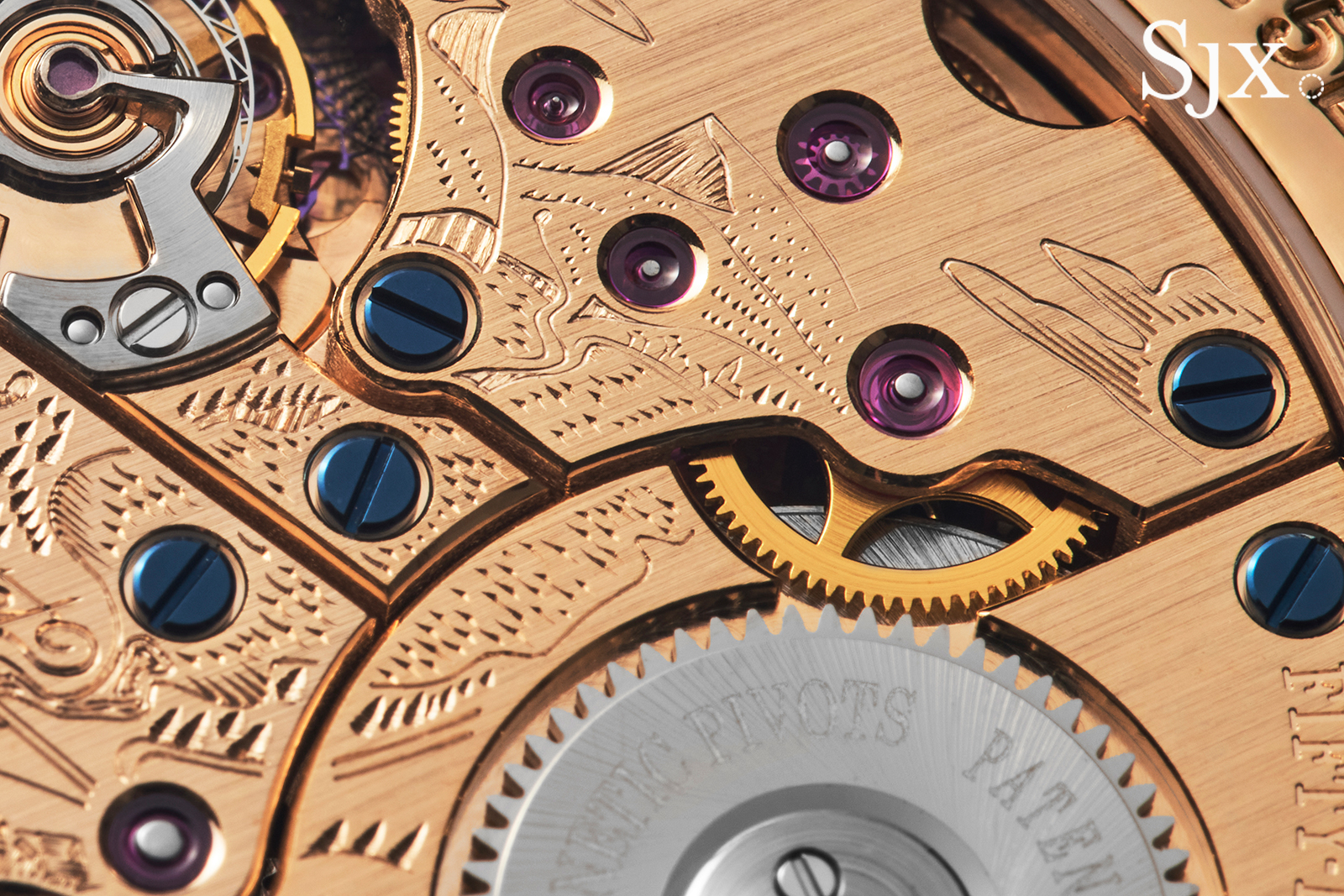
Key facts and price
Breguet Classique 7225
Ref. 7225BH0H9V6
Diameter: 41 mm
Height: 10.7 mm
Material: 18k “Breguet” gold
Crystal: Sapphire
Water resistance: 30 m
Movement: Cal. 74SC
Functions: Hours, minutes, seconds, power reserve, and “observation seconds”
Winding: Manual wind
Frequency: 72,000 beats per hour (10 Hz)
Power reserve: 60 hours
Strap: Alligator strap with pin buckle
Limited edition: No
Availability: First availability at boutiques, but also at retailers
Price: CHF75,000
For more information, visit Breguet.com.
Back to top.

